
Mirabilis is a genus of plants in the family Nyctaginaceae known as the four-o'clocks or umbrellaworts. The best known species may be Mirabilis jalapa, the plant most commonly called four o'clock.
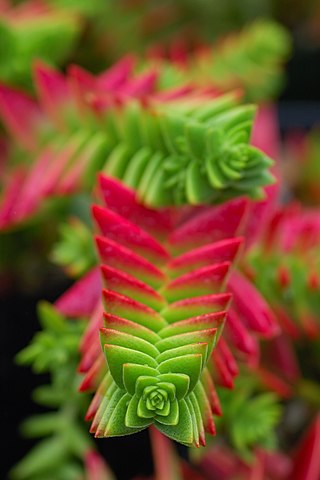
Crassula is a genus of succulent plants containing about 200 accepted species, including the popular jade plant. They are members of the stonecrop family (Crassulaceae) and are native to many parts of the globe, but cultivated varieties originate almost exclusively from species from the Eastern Cape of South Africa.

Dryopteris expansa, the alpine buckler fern, northern buckler-fern or spreading wood fern, is a species of perennial fern native to cool temperate and subarctic regions of the Northern Hemisphere, south at high altitudes in mountains to Spain and Greece in southern Europe, to Japan in eastern Asia, and to central California in North America. It prefers cool, moist mixed or evergreen forests and rock crevices on alpine slopes, often growing on rotting logs and tree stumps and rocky slopes. It is characteristically riparian in nature, and is especially associated with stream banks.

The Arrau turtle, also known as the South American river turtle, giant South American turtle, giant Amazon River turtle, Arrau sideneck turtle, Amazon River turtle or simply the Arrau, is the largest of the side-neck turtles (Pleurodira) and the largest freshwater turtle in Latin America. The species primarily feeds on plant material and typically nests in large groups on beaches. Due to hunting of adults, collecting of their eggs, pollution, habitat loss, and dams, the Arrau turtle is seriously threatened.

Podocnemis is a genus of aquatic turtles, commonly known as South American river turtles, in the family Podocnemididae. The genus consists of six extant species occurring in tropical South America. Four additional species are known only from fossils. These turtles have pig-like noses but are not closely related to the pig-nosed turtle.

Maevia is a spider genus of the family Salticidae.

Eupterotidae is a family of insects in the order Lepidoptera with more than 300 described species.
Vrilletta expansa is a species of beetle in the family Ptinidae.
Vrilletta is a genus of beetles in the family Ptinidae.

Photinula is a genus of sea snails, marine gastropod mollusks in the family Calliostomatidae.
Chromodoris dictya is a species of colourful sea slug, a dorid nudibranch, a marine gastropod mollusc in the family Chromodorididae.

Chelodina (Chelydera) expansa, commonly known as the broad-shelled river turtle, broad-shelled snake-necked turtle, or giant snake-necked turtle, is a pleurodiran freshwater turtle and is the largest of the long-necked turtles. It is widely sympatric with the Murray River turtle and eastern snake-necked turtle. C. expansa is listed as ‘vulnerable’ in South Australia and ‘threatened’ in Victoria.
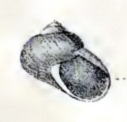
Margarella expansa is a species of sea snail, a marine gastropod mollusk in the family Calliostomatidae.
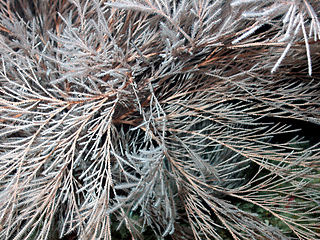
Aphanipathes is a diverse genus of black corals in the family Aphanipathidae, typified by large polypar spines. However, there are some disagreement in the correct taxonomic classification of this genus. The Global Biodiversity Information Facility (GBIF) classifies Aphanipathes as being a genus of the family Aphanipathidae while the Integrated Taxonomic Information System (ITIS) classifies it as a genus of the family Antipathidae.
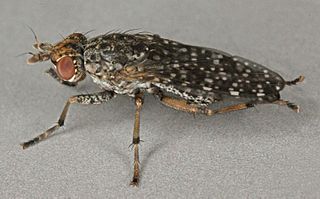
Dictya umbrarum is a species of fly in the family Sciomyzidae. It is found in the Palearctic and Nearctic. Long. : 4-5 mm. Intensely spotted wings. The interocular space with a black mark at the anterior orbital. The face is white with a black or brown central point. The antennae are reddish, the arista yellow at the base. The body is black covered in a grey yellow pruinosity with shifting (changeant) brown spots on the abdomen. The femora are grey with a brown apical band. The tibia are yellow with a brown apical ring (anneau). For terms see Morphology of Diptera. Dictya montana is a predator of aquatic pulmonate snails with no apparent parasitoid tendency.
Dictya atlantica is a species of marsh fly in the family Sciomyzidae.

Dictya is a genus of marsh flies in the family Sciomyzidae. There are at least 20 described species in Dictya.
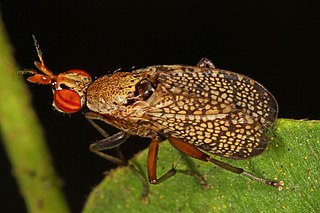
Tetanocerini is a tribe of flies in the family Sciomyzidae. There are more than 400 described species in the tribe.
Moana is a genus of cicadas in the family Cicadidae. There are at least four described species in Moana.

Antianthe expansa, known generally as the keeled tree hopper or solanaceous treehopper, is a species of treehopper in the family Membracidae.













